From North to South: Italy’s Most Beloved Pasta Dishes
Flavours of the Italian Landscape
Italy’s love affair with food is world-renowned—and for good reason. From bustling city trattorias to sleepy hilltop villages, every corner of the country offers something delicious and distinct. What makes Italian cuisine especially fascinating is how deeply regional it is. Travel just an hour in any direction and you’ll find completely different dishes on the menu, each rooted in local ingredients, history, and tradition.
In the north, you might find rich, creamy sauces and buttery risottos. Head south and you’ll encounter bold tomato flavours, spicy peppers, and sun-dried ingredients. Pasta itself changes shape, name, and preparation style depending on where you are. It tells the story of Italy’s geography, culture, and fiercely proud regional identities.
In this guide, we’ll take you on a flavourful tour of Italy through its most iconic pasta dishes, one region at a time. Buon appetito!
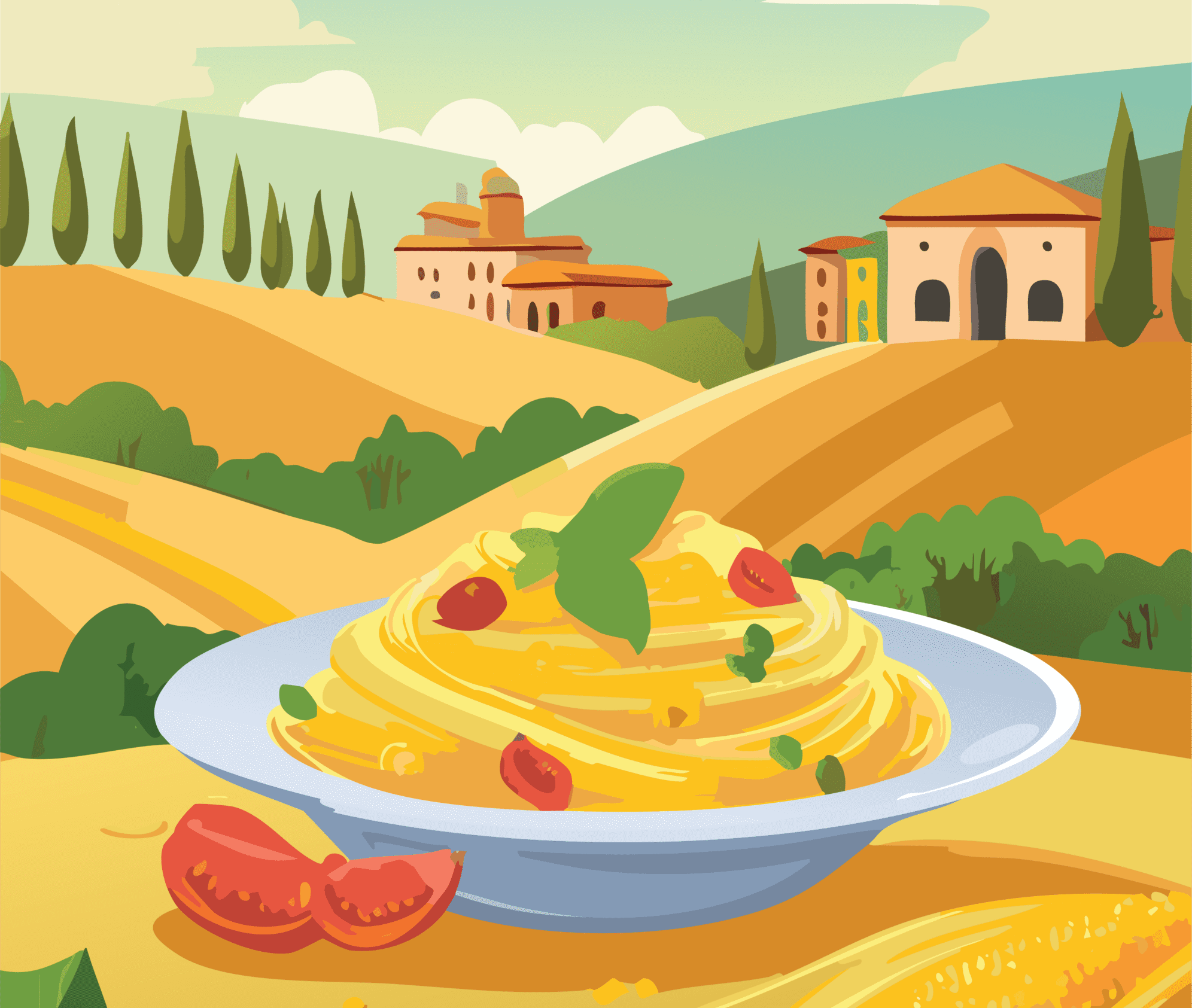
Grab your suitcase and a fork! It’s time to start exploring.
Bigoli in Salsa
📍Veneto
In the romantic heart of northern Italy lies the Veneto region, home to misty canals, Renaissance villas, and the ethereal city of Venice itself. Amid the gondolas and golden light reflecting off the water, you’ll find Bigoli in Salsa—a humble yet deeply flavourful dish that tells the story of Venice’s seafaring past.
How it’s made: Bigoli are long, thick strands of pasta, slightly coarser than spaghetti, traditionally made with whole wheat flour and eggs (sometimes duck eggs, for extra richness). Their firm, rough texture makes them perfect for holding onto the deeply savoury sauce that gives this dish its name. The salsa is a slow-cooked blend of caramelized onions and anchovies or salt-cured sardines. As the onions melt into sweetness, the anchovies dissolve into a briny umami depth, creating a silky, pungent sauce that coats each strand of bigoli with an addictive, salty-sweet richness. The aroma alone is enough to transport you to a Venetian trattoria tucked away on a quiet calle.
Fun fact: Historically, Bigoli in Salsa was a traditional dish served on lean days in the Catholic calendar, such as Christmas Eve and Good Friday, when meat was avoided. Yet despite its modest origins, it’s become a beloved staple that showcases the elegance of simplicity and the influence of Venice’s maritime trade routes.
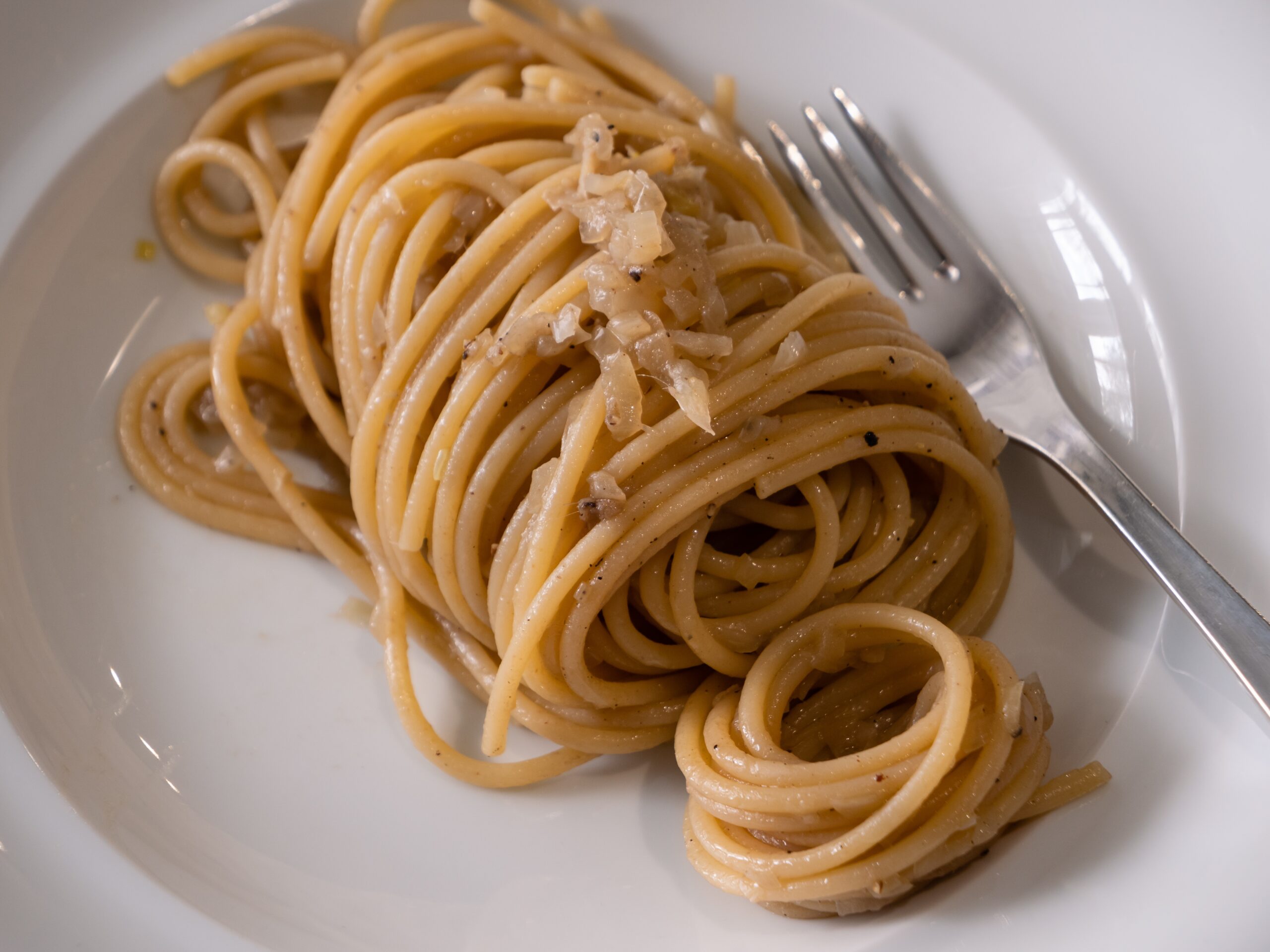
Lasagna
📍Emilia-Romagna
Welcome to Emilia-Romagna, Italy’s culinary heartland, where rolling green hills meet medieval towns, and every meal feels like a celebration of tradition. This region is the birthplace of Parmigiano-Reggiano, prosciutto di Parma, and perhaps the most comforting dish of all: lasagna.
How it’s made: Sheets of fresh egg pasta are carefully stacked between generous layers of creamy béchamel sauce and slow-simmered ragù alla bolognese. This isn’t the sweet tomato sauce version many know abroad; the authentic ragù here is a robust blend of finely minced pork and beef, aromatic vegetables, wine, and just a hint of tomato, cooked low and slow for hours until it’s deeply savoury and impossibly rich. Topped with a generous snowfall of aged Parmigiano-Reggiano, the lasagna is baked until bubbling at the edges and golden on top. The result is a dish that’s deeply layered not just in structure, but in flavour.
Fun fact: Dating back to the Middle Ages, lasagna was once a prized dish served on feast days and special occasions. It remains a beloved symbol of Emilia-Romagna’s proud culinary heritage and its reverence for high-quality ingredients and slow, thoughtful cooking.
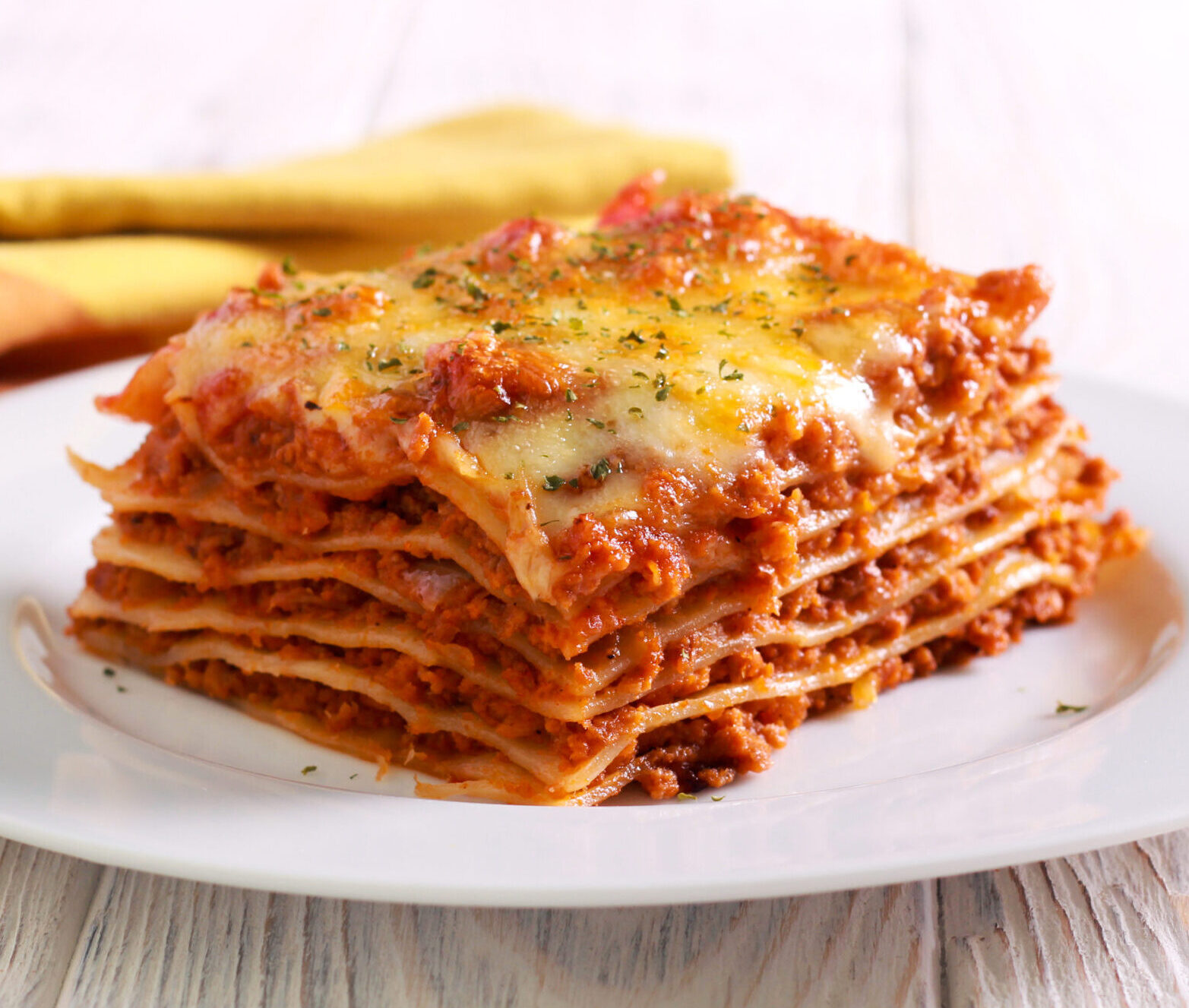
Pappardelle al Cinghiale
📍Tuscany
Tuscany is the Italy of storybooks. Rolling hills dotted with cypress trees, golden fields stretching into the horizon, and medieval towns perched like jewels above the vineyards. It’s a region where rustic elegance reigns, and the food reflects the land: hearty, bold, and deeply satisfying.
How it’s made: Broad, flat ribbons of pasta, pappardelle, are the perfect match for a rich and aromatic sauce made from wild boar (cinghiale), a prized ingredient in the region’s hunting culture. The meat is marinated in red wine and herbs, then slow-cooked with tomatoes, onions, celery, carrots, and bay leaves until it becomes tender enough to fall apart with a fork. The sauce is earthy and robust, with notes of juniper and rosemary adding wild, woodsy undertones. Each bite is a journey through Tuscany’s forests and vineyards, where wild game has long been part of the seasonal rhythm of life.
Fun fact: Dating back to Etruscan times, wild boar has been hunted in Tuscany for millennia, and this dish is a culinary tribute to those ancient traditions. Often served during autumn festivals or cool winter nights, Pappardelle al Cinghiale is more than just a meal. It’s a celebration of local heritage, seasonal cooking, and the timeless pleasure of pasta made by hand.
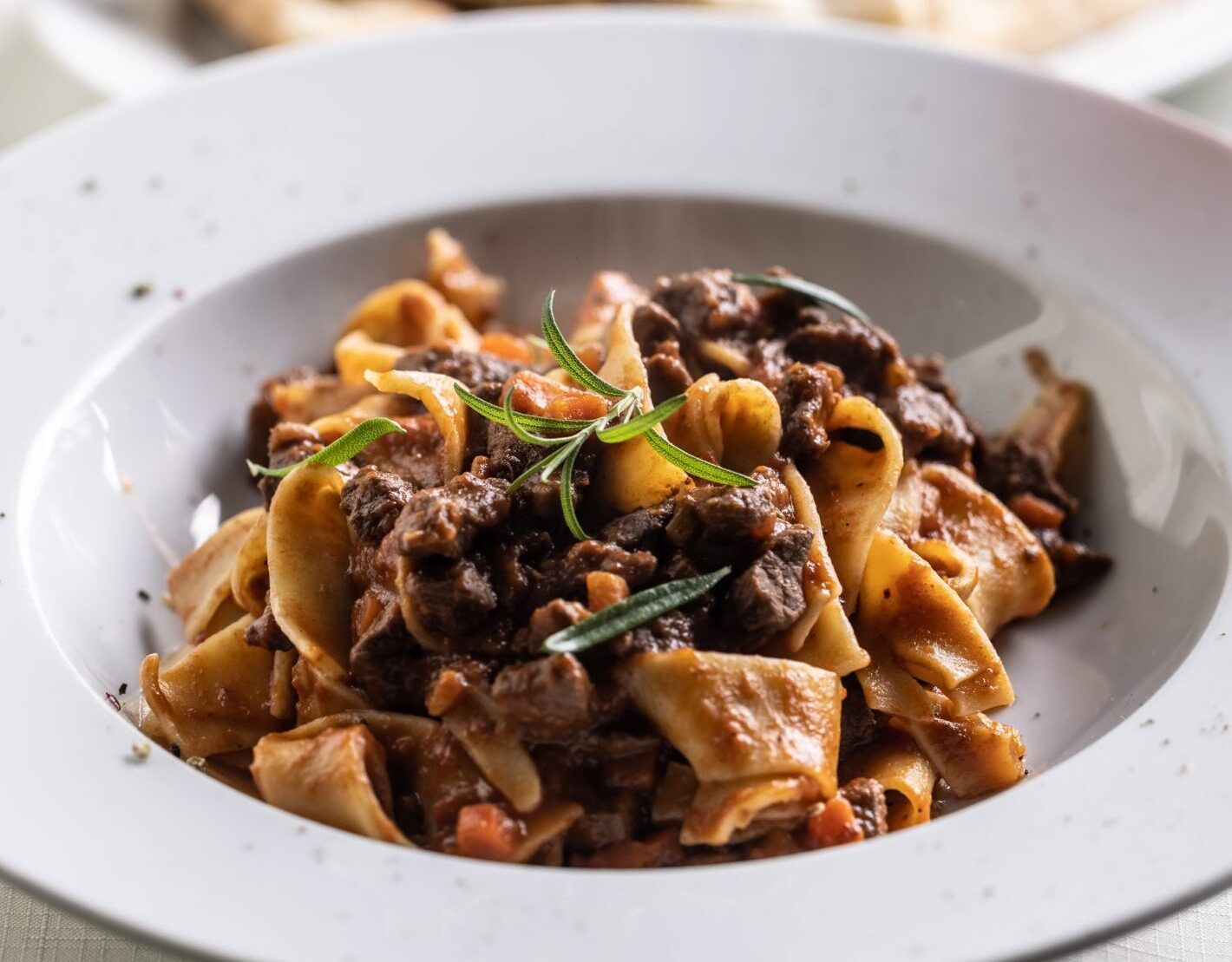
Cacio e Pepe
📍Lazio
Lazio, the region that cradles Rome, is steeped in ancient grandeur and rustic charm. From the splendour of the Colosseum to the quiet cobblestone lanes of Trastevere, its culinary identity is equally timeless.
How it’s made: Translating to “cheese and pepper,” this deceptively simple pasta is a Roman classic. It uses only three ingredients: al dente spaghetti, sharp and salty Pecorino Romano cheese, and freshly cracked black pepper. Yet in those three ingredients lies centuries of culinary wisdom. With a splash of starchy pasta water, they’re transformed into a glossy, velvety sauce that clings to every strand like silk. See below for a detailed recipe so you can make it for yourself!
Fun fact: The dish dates back to Roman shepherds, who carried aged cheese and black pepper (lightweight ingredients that didn’t spoil easily) as they moved through the Apennines. Over time, Cacio e Pepe evolved from a humble shepherd’s supper into a beloved trattoria staple, celebrated for its bold flavour and minimalism.
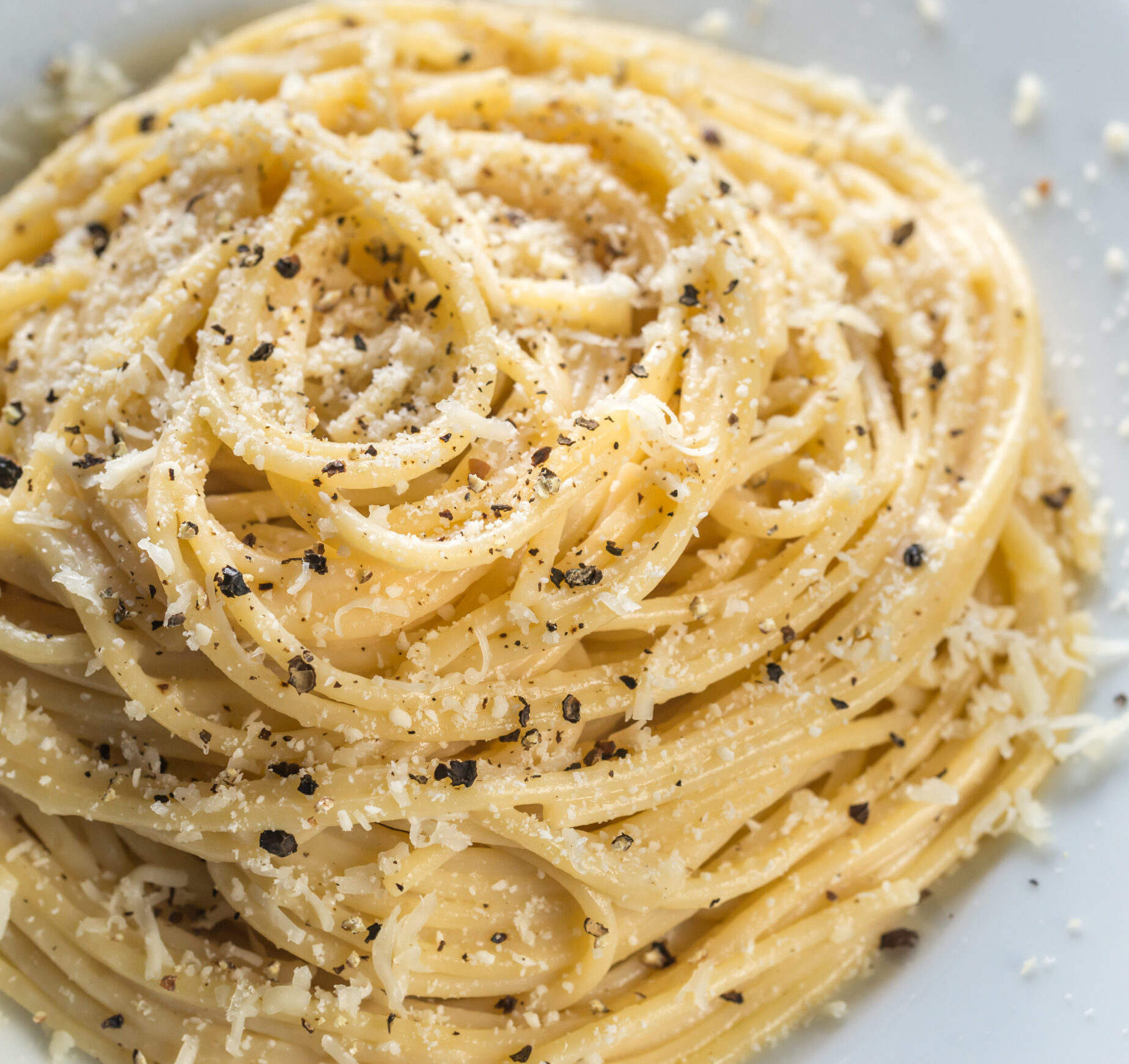
Spaghetti alla Puttanesca
📍Campania
Campania, home to the sun-drenched Amalfi Coast, the bustling streets of Naples, and the fertile volcanic soils surrounding Mount Vesuvius, is a region rich in passion, flavour, and dramatic landscapes. Its cuisine is bold and unpretentious, rooted in the abundance of the sea and the tang of ripe southern tomatoes.
How it’s made: This dish brings together some of Italy’s most iconic ingredients: juicy San Marzano tomatoes, briny black olives, capers bursting with salt and acidity, and a punch of umami from anchovies. Garlic and chili flakes give it a gentle heat, while parsley adds freshness at the finish.
Fun fact: The origin of the dish is as colourful as the region itself. One story suggests it was created in the 1950s by a restaurant owner in Ischia who threw together whatever ingredients he had left in the kitchen to please hungry late-night guests. Another (more risqué) legend claims it was popularised in the “case chiuse” (brothels) of Naples—hence the cheeky name puttanesca, which loosely translates to “in the style of the ladies of the night.”
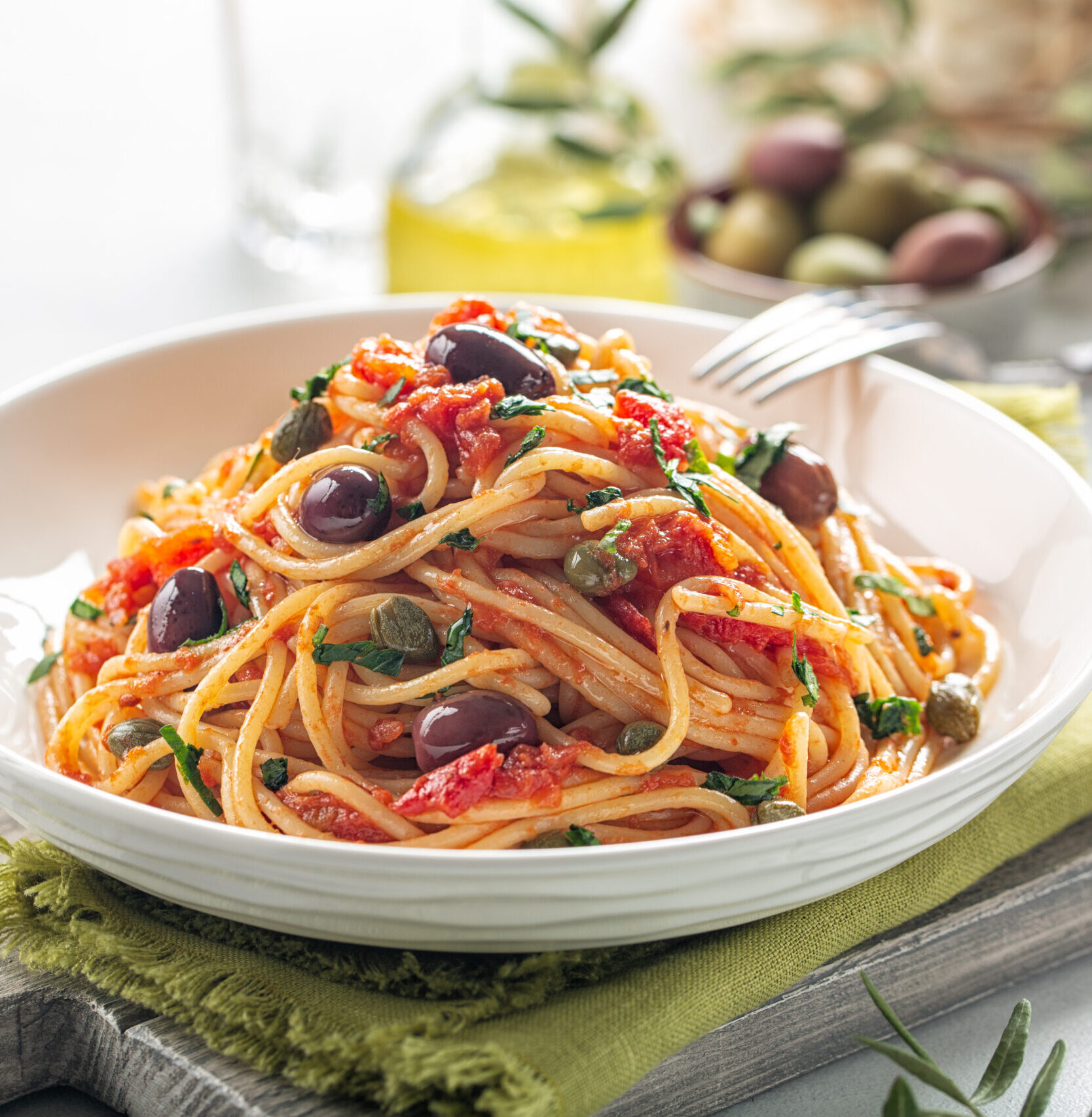
Orecchiette con Cime di Rapa
📍Puglia
Nestled in Italy’s sun-baked heel, Puglia is a region of ancient olive groves, whitewashed hill towns, and dramatic coastlines that meet the azure Adriatic Sea. You can read more about its Mediterranean cuisine here.
How it’s made: Orecchiette con Cime di Rapa is Puglia on a plate. The pasta—orecchiette, or “little ears”—is hand-shaped using just flour and water, creating a small cupped surface that holds sauce like no other. The pasta is traditionally paired with cime di rapa (broccoli rabe), a slightly bitter green that brings depth and contrast to the dish. Sautéed garlic and fresh chili peppers add warmth and zest, while anchovies (often melted invisibly into the mix) lend a rich savoury undertone.
Fun fact: Historically, this dish was born from necessity and ingenuity. In Puglia’s cucina povera, or “peasant cooking,” families made the most of what was available: seasonal greens from the garden, preserved anchovies, and handmade pasta crafted with skill and care. Today, it’s a beloved staple that speaks to the region’s resourceful spirit and its deep connection to the land.
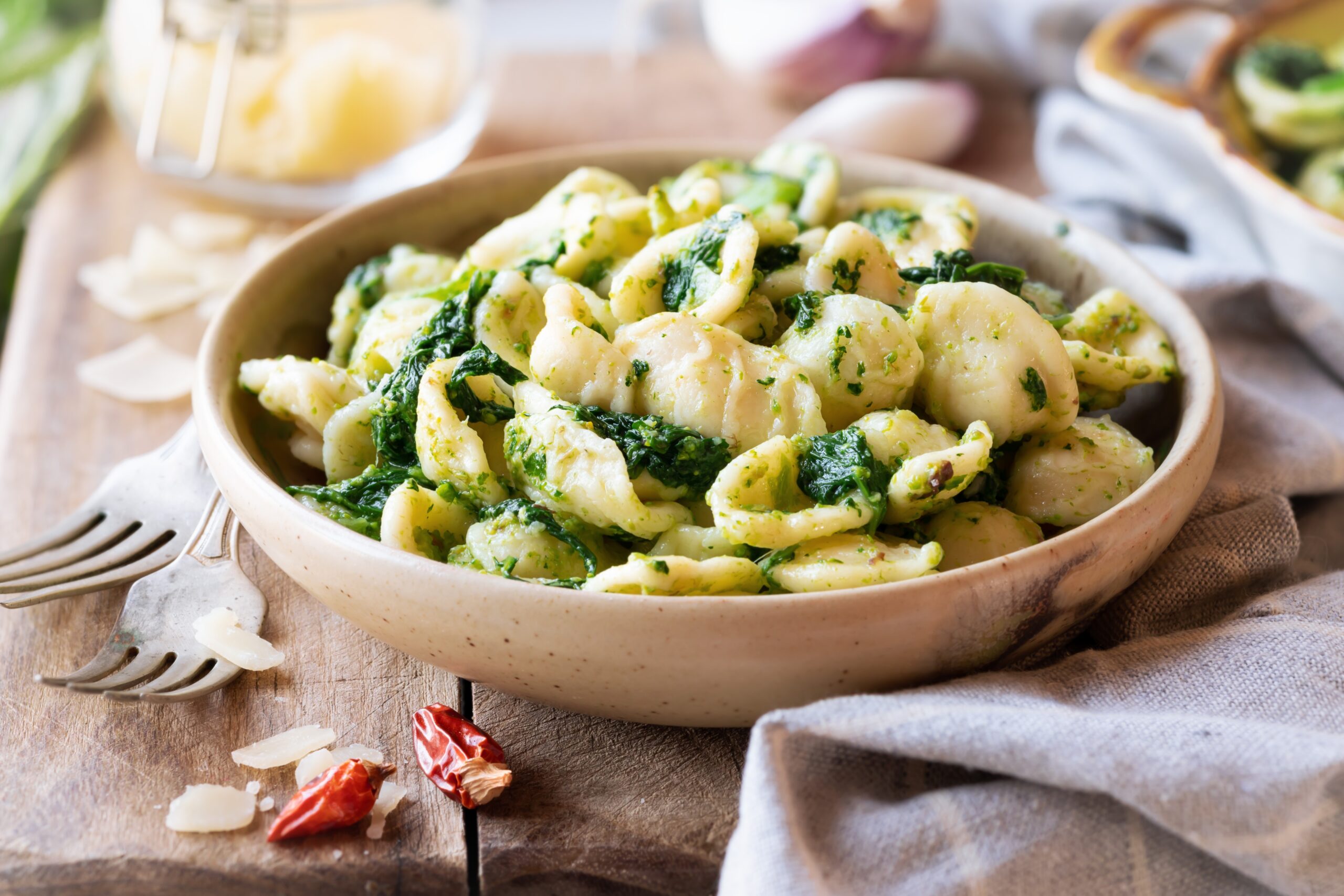
Lagane e Ceci
📍Basilicata
Tucked away in the rugged mountains and quiet villages of southern Italy, Basilicata is a land of winding roads, forested hills, and time-honoured traditions.
How it’s made: Lagane e Ceci is one of the region’s most cherished dishes, a comforting blend of wide, ribbon-like noodles (lagane) and creamy chickpeas (ceci) simmered together in a fragrant mix of garlic, rosemary, and olive oil.
Fun fact: Often considered one of the oldest pasta recipes in Italy, lagane predates even Roman times, with references found in the writings of the poet Horace—who just so happened to be born in Basilicata.
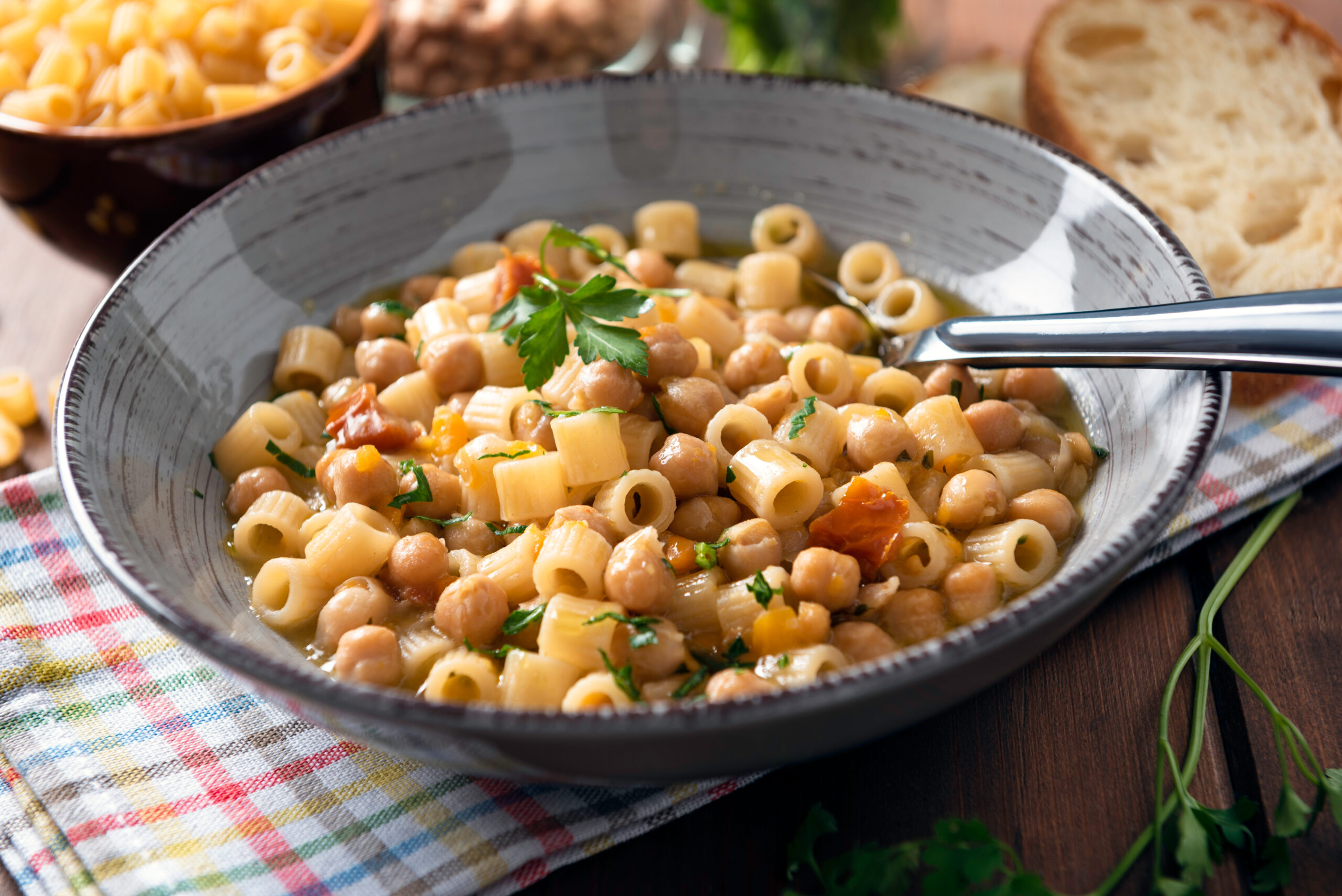
Fileja Calabresi
📍Calabria
In Calabria, the toe of Italy’s boot, bold flavours and fiery passion run through every dish, none more so than Fileja Calabresi. This rustic, spiral-shaped pasta is hand-rolled with a traditional thin rod called a ferro, giving it a hollow center and satisfying bite that holds sauces beautifully.
How it’s made: Often paired with a rich tomato sauce and ’Nduja—Calabria’s famous spicy, spreadable pork sausage—this dish captures the essence of the region’s sun-drenched landscape and vibrant culinary spirit. The sauce simmers with garlic, olive oil, and chili, soaking into the grooves of the pasta to create a dish that’s equal parts comforting and exhilarating.
Fun fact: Fileja has its roots in home kitchens, passed down through generations of Calabrian nonne, and was traditionally made for feasts and festivals. The addition of ’Nduja, once a humble peasant food, reflects Calabria’s resourceful past and its love for bold, spicy heat.
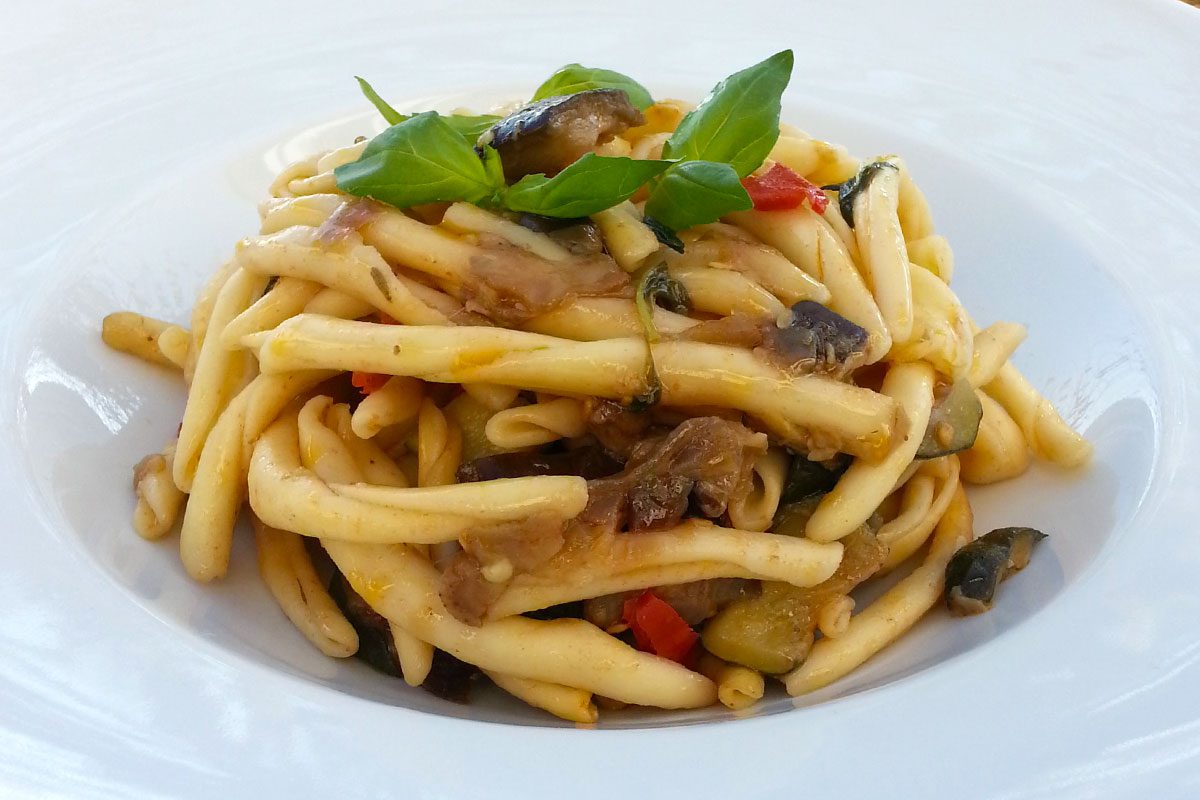
Pasta alla Norma
📍Sicily
Sicily’s culinary identity is a vibrant mosaic of Mediterranean influences, and few dishes showcase this better than Pasta alla Norma.
How it’s made: Typically made with rigatoni or another short pasta, the dish is a medley of tender eggplant, rich tomato sauce, fresh basil, and a generous dusting of salty, crumbly ricotta salata. The eggplant is often fried to golden perfection, bringing a velvety texture and slightly smoky depth to the sauce. The ricotta salata—an aged, firm version of ricotta—adds a savoury sharpness that ties the dish together beautifully.
Fun fact: Hailing from the sun-kissed city of Catania, this beloved recipe brings together simple, fresh ingredients with theatrical flair—fitting, since the dish was allegedly named after the opera Norma by Vincenzo Bellini, a Catania native. Legend has it that a chef served the dish to a guest who exclaimed, “This is a real Norma!”. (You can read more about Italian opera in our Italy Dream Magazine!)
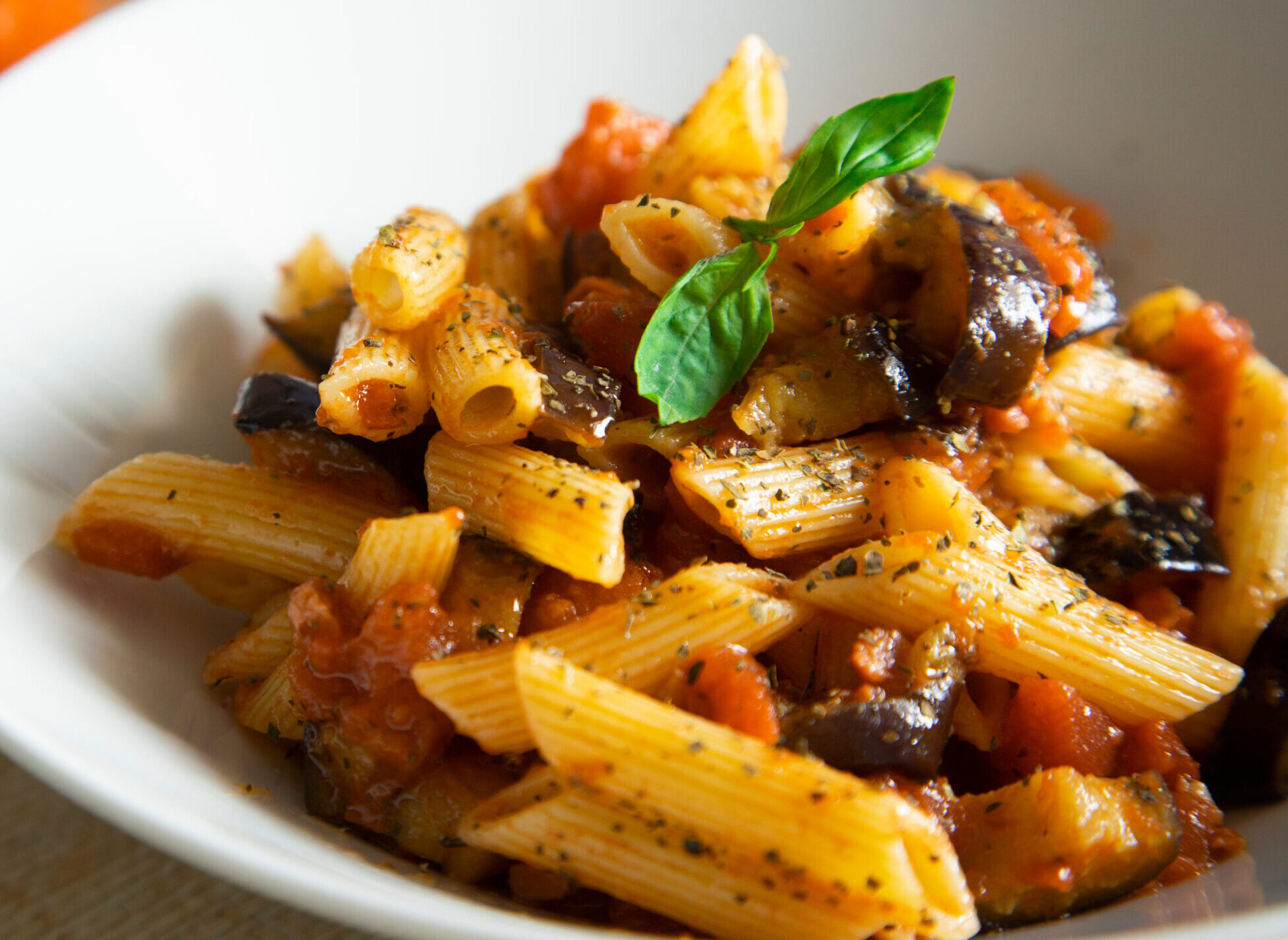
Bring the flavours of Italy to your kitchen!
Recipe: Cacio e Pepe
Ingredients
Pasta dough
1 cup all-purpose flour
1 cup fine semolina flour
3 whole eggs, beaten
Pinch of salt
Water as needed
Cacio e pepe sauce
2 cups Pecorino Romano, freshly grated (or Parmigiano Reggiano)
2.5 tbsp black peppercorns, freshly ground
Salt to taste
Instructions
1. Combine all-purpose and semolina flour, piling it up to create a small dome with a well in the middle. Pour beaten eggs into the well, and add a pinch of salt. Mix the eggs and flour with your hands until it forms a ball. If it’s too dry, slowly add water until it becomes smooth. If it’s too wet and sticky, slowly incorporate more flour. Wrap the flour ball in plastic wrap and let it sit in the fridge for at least 30 minutes, up to 24 hours.
2. While the dough rests, prep your other ingredients: finely grate your cheese, and grind your peppercorns with a pepper mill, or mortar and pestle. Once ready, remove dough from the fridge and knead it with your hands, working it until it bounces back when poked with your finger (about ten minutes).
3. Bring a large pot of generously salted water to a boil. Once boiling, keep it on a low rolling boil while you make your pasta – the key is having the water ready as soon as your pasta is prepped.
4. Flatten the dough on a clean, floured surface with your palms or a rolling pin until it’s about an inch thick. If you have a pasta machine, feed the dough through on setting 7 (the thickest setting) at least twice, until smooth. Flour generously, then feed the sheet of dough back through the spaghetti attachment, tossing it with more flour. If you don’t have a pasta machine, roll the dough with a rolling pin until it’s translucent when held up to the light. Using a sharp knife, cut the sheet of dough into strips about 0.5 centimeters in width. Toss generously with flour.
5. Add your pasta to the pot of boiling water and cook for 3-4 minutes. While the pasta cooks, heat up a large metal or glass bowl by rinsing it with a ladleful of boiling water. Add the grated cheese, peppercorns and a pinch of salt to the heated bowl. Add a large ladle of pasta water to the bowl. Whisk quickly until it combines and forms a glossy sauce. When the pasta starts to float, remove the noodles from the boiling water with tongs, and quickly toss them in the cheese sauce. The sauce should coat the pasta evenly – if it’s too loose, add more grated cheese, tossing quickly and continuously so it doesn’t clump. If it’s too dry, add more pasta water one teaspoon at a time.
6. Serve warm with added cheese, pepper, and a drizzle of olive oil.
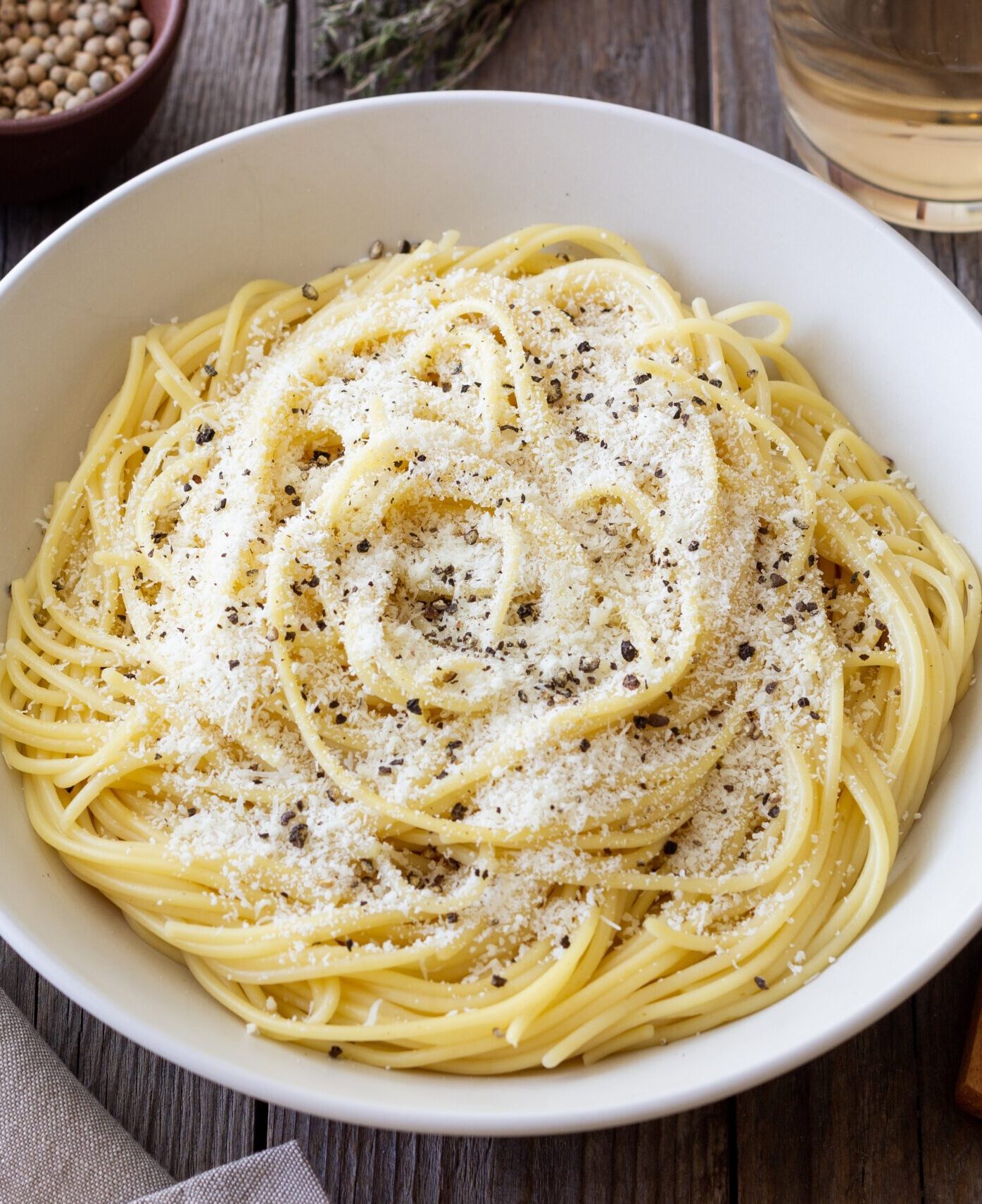
Hungry for more?
Sign up for one of our tours!
Sicily & Southern Italy
Fresh artichokes, tomatoes, sweet almonds, aubergine and cold pressed olive oil will never taste the same. The south of Italy has its own spin on everything, and food is only one example. Lose yourself in the Sicilian heartland and learn about the myriad of civilizations that each left their mark on the island. Discover Greek temples, Arab-inspired markets, Norman castles, and the shimmering beauty of the volcanic Aeolian Islands. A few kilometres north, Calabria and Puglia offer distinct culinary traditions and spectacular coastal towns. Celebrate the art of living, eating and travelling slowly, in the region that started it all.
Departures: September & October 2025April & May 2026September & October 2026 (+$200)
Signature Italy Tour
A cherished favourite for many travellers, and the home of the “Dolce Vita” way of life, Italy has an expansive and established influence in world culture. Fall under the subliminal charm of fine leathers, renaissance art, classical music, delicate pasta, Neapolitan pizza, wonderful wines, fresh mozzarella, and velvety chocolate. From Venice’s waterways and Pisa’s leaning tower, to Florence’s Duomo and Cinque Terre’s panoramic views – an unforgettable experience awaits. Our expertly curated Italy tours and Italy tour itineraries go beyond the essentials, offering a truly immersive tour of Italy perfect for first-time visitors or seasoned travellers returning for another unforgettable journey.
Departures: September & October 2025April & May 2025September & October 2026 (+$200)
